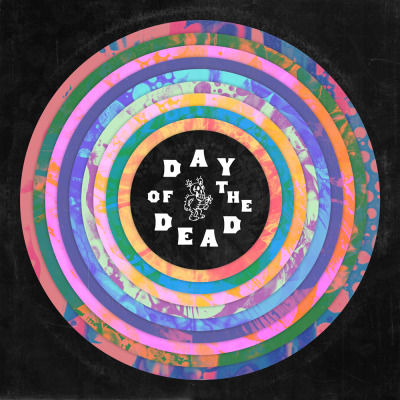Since 2009, the Brooklyn Bowl has sat in the middle of the Williamsburg neighbourhood of Brooklyn, the early-century capital of American indie rock. This bowling alley/rock club hybrid is owned by Peter Shapiro, promoter behind the enormous Fare Thee Well concerts thrown by the surviving members of the Dead in San Francisco and Chicago last summer. It’s also a descendent of Wetlands Preserve, the ’90s NYC epicentre of the jam band scene that nurtured the post-Dead generation of touring stalwarts Blues Traveler, Spin Doctors and Phish.
Today, the Brooklyn Bowl symbolises the blurrier lines between indie and jam scenes, equally likely to book Dinosaur Jr and Guster. Several Dead cover bands have also made the venue their home, from drummer Joe Russo’s Almost Dead, which focuses on the band’s jam-heavy, “primal” early days, to occasional indie-rock all-star Dead tributes hosted by Alex Bleeker & The Freaks, a side project of Real Estate’s bassist.
Brooklyn Bowl is the physical symbol of an indie-jam merger that has been ongoing for the past 15 years, as a generation of musicians too young to have seen Jerry Garcia in the flesh increasingly find fertile territory in the Dead. In his new book, Heads, a history of psychedelic culture, writer Jesse Jarnow retraces the Dead’s hip revival to a July 2004 issue of the underground ’zine Arthur, which compared a 1974 performance of “Dark Star” to “In A Silent Way as interpreted by Sonic Youth”. In 2009, art-noise band Animal Collective – whose psychedelic day-glo aesthetic and debuting-songs-live practices were already very Deadish – became the first artist to legally clear a Grateful Dead sample, looping a line of Phil Lesh vocals from “Unbroken Chain” for “What Would I Want? Sky?”.
As traditional barriers fell away, more and more young musicians who rejected the Dead at a younger age started to find inspiration in their vast repertoire.
“Punk ‘orthodoxy’ kind of pushed prog, jam and fusion music out of the picture, but it didn’t yield a better crop of new music, necessarily. It’s more like everybody just decides they should sound vaguely like Joy Division,” says Ruban Nielson of Unknown Mortal Orchestra. “It’s more fun to take threads from that punk canon and splice it with the bands that were never supposed to cross pollinate with them.”
The rise of festivals such as Bonnaroo and Mountain Jam, which threw Dead alumni and indie up-and-comers together to lure maximum crowds to remote fields, further helped break down resistance, as bands such as My Morning Jacket, Wilco and the Flaming Lips found success in these newly-formed DMZs between the two worlds.
“In some ways, there has been a beautiful progression with real music listeners – it seems that more and more people just want to enjoy music instead of labelling it and judging it by preconceived notions,” said Jim James of My Morning Jacket, who covers “Candyman” on Day Of The Dead. “We definitely want to follow in the footsteps of the Dead in trying to blend all cultures and all worlds of people and music – because, at the end of the day, it’s all the same – just different shades of the same thing and every shade is beautiful and we need them all.
You can really hear that in the music of the Dead.”
More recently, the Dead’s iconic ‘Stealie’ logo has drifted into the T-shirt art and social media profiles of younger bands such as Woods, Ultimate Painting and Chris Forsyth, a not-so-secret code signaling their psychedelic leanings. Fuelled by easy access to thousands of Dead shows through the Internet Archive and streaming services, musicians are finding flavours of the Dead that their iconic pop culture reputation had long obscured.
“That is the saddest thing about them, that a superficialising media, especially classic rock, defined them from one limited period out of 30 years,” says Dennis McNally, the band’s official historian and publicist. “Particularly as to their music, they covered all kinds of ground, and it isn’t all just early-’70s country-rock.”


